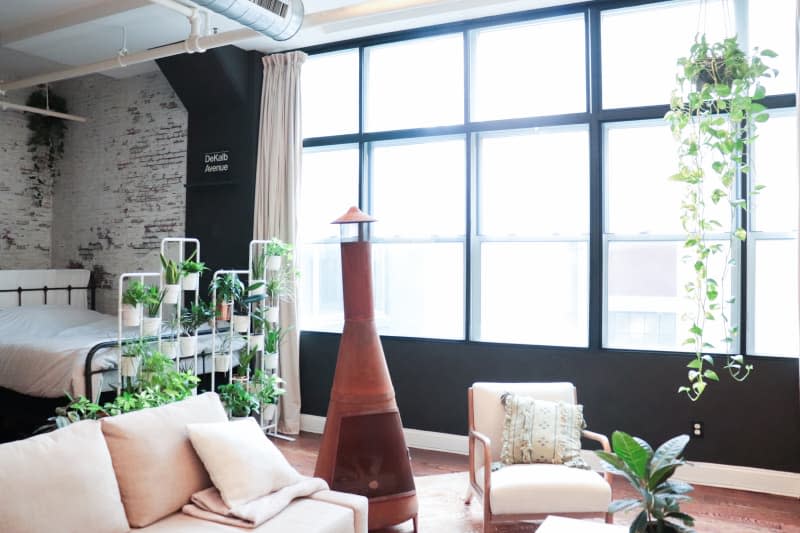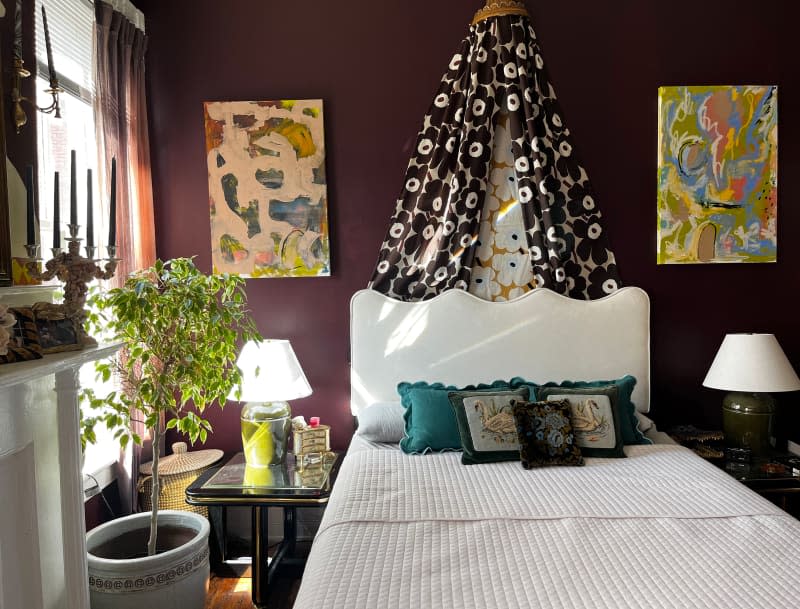I Swear by This “Magic Number” of Plants to Avoid Going Overboard in My Home

Besides art or a fresh coat of paint, plants are my go-to for livening up a space. When I first cultivated my green thumb, I always thought more was more. But between my busy travel schedule and the fact that it was taking hours each week to water the indoor jungle I’d created, I quickly learned that I needed a new plan for my plants.
That’s when I came across NASA’s 1989 study that recommended having one houseplant for every 100 square feet in your home in order to decrease indoor air pollution (for best results, the study also suggested sticking to certain species of plants, too). At the time, I’d just moved into a 700-square-foot one bedroom apartment in Long Island City, New York, so I scaled my greenery collection back to just seven plants.
To avoid going overboard while still making an impact, I decided bigger was better. I invested in a large statement fiddle leaf fig for my living room and a giant monstera by my bedroom window. For the other five, I balanced things out with low-maintenance options like a snake plant, pothos, a ZZ plant with English ivy that lined my walls, and (my favorite): a gardenia that fragrantly blossomed from time to time.
This NASA study has since been debunked on the basis of air purification, but I still used the concept as a personal “golden rule” for keeping my indoor houseplants manageable. “Actually, plants do not clean indoor air,” explains Jill Heins-Nesvold, senior director of nationwide health systems improvement an indoor air quality for the American Lung Association. “In short, you would need 10 to 1,000 plants per square meter of floor space in your home to reduce volatile organic compounds (VOCs) and improve air quality.”

That said, Marc Hachadourian, New York Botanical Garden’s director of glasshouse horticulture and senior curator of orchids, notes there are “other studies linking the presence of plants in an environment to reducing stress, lowering blood pressure, and general overall well-being.” Ultimately, the amount of plants in your home comes down to personal preference — regardless of square footage — but using this NASA-inspired “magic number” can help cut down on extra upkeep costs and maintenance, too.
“Remember that plants will require an investment of time for their care, not to mention the cost of pots, soil, fertilizer, and other things you need,” Hachadourian adds. “Choose as many plants as you’re willing to devote time and money to — you want to own your plants, not have them own you. Gardening should also bring joy and pleasure; don’t overextend yourself or your space, and you will be happiest with your plants. It’s better to grow 10 plants with success than 100 with stress.”
Before I got my place under control, my mistake was just buying houseplants that I thought were pretty, smelled good, or I’d eat all the time. (I can’t tell you how many basil plants that’ve turned brown.) I rarely knew anything about caring for them either, resulting in many wilting and eventually dying. Now, after limiting my plants to one every 100 square feet, I’m well-versed in a small, healthy assortment. And you know what? A few great, growing plants still create the home scent and visual impression I’ve always wanted.

